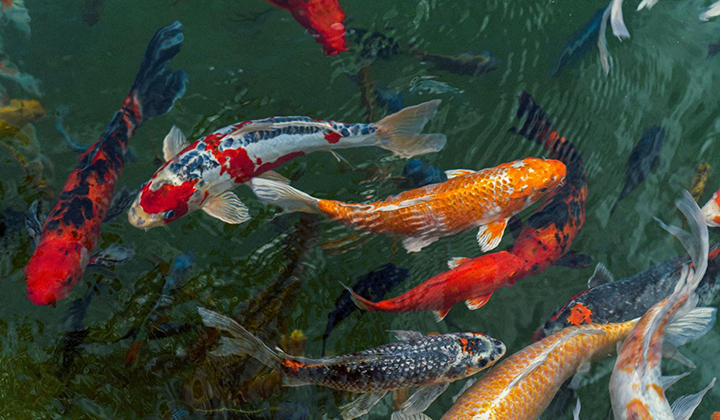
Are you considering growing your koi population? Then think about breeding koi fish. Nothing beats having a successful koi breeding program. There are prerequisites for engaging in this enjoyable hobby. You’ll soon have many gorgeous koi babies if you follow the right procedures, have the necessary tools, and have the time. Breeding koi fish Koi breeding takes a lot of work but may be quite enjoyable.
The activity might be anything from a hobby to a full-time job. Koi breeding might be for you if you have the time, room, and money to grow your koi collection! Koi breeding is a simple approach to increasing the number of fish in your pond and can be lucrative. In today’s blog, we are going to talk all about how to breed koi fish.
When the water reaches 68 degrees Fahrenheit and the koi emerge from their winter hibernation, the breeding season lasts from February to May. Breeders, on the other hand, employ breeding and nursery tanks for a more regulated environment.
These are at least 4 x 4 x 2 feet in size and each carries roughly 200 gallons. They must have complete heating, filtering, and pump systems. For the newly released eggs, the breeding pond will also require some synthetic grass or spawning brush.
The health of the koi and their spawn depends on a clean pond. During the mating season, maintain the water clear by using a specialized koi pond biofiltration system. Getting a saltwater aquarium filter media is crucial.
However, you may also create your do-it-yourself pond filtering system; however, as they begin to spawn, switch off the filters and replace them with an aerator instead, as the filters will suction the eggs. Before introducing the koi fish breeders, you might need to clean up your pond, drain all the water, and cycle the breeding tank for a few days if it’s very unclean or overrun with algae.
To safeguard the spawn, the pond should be cleared of predators (such as other fish) and trash. To get rid of anything that can hurt the koi, use a skimmer net or any comparable scoop equipment. Skimmer nets are available at home improvement stores. Cover your pond with netting to safeguard the koi if cats or birds are coming. Use a piece of netting big enough to cover the pond, then use heavy boulders to anchor it.
Keep in mind the characteristics you want to pass on to the koi fry while selecting the koi you want to breed. Colors, patterns, and scale kinds are all qualities that can be handed down, though it is challenging to anticipate which genes will manifest in the progeny. However, metallic scales will predate genes for normal sheen, and two normal-scale koi will typically produce normal-scale koi.
Most features that will manifest are unpredictable unless the breeding koi are descended from a specific lineage. There will be numerous variances among the tens of thousands of kids.
In general, it is advised that you select your two prettiest koi for breeding. Look for healthy fish when choosing your male and female koi. A female koi that is at least 3 or 4 years old is the best option. Females older than 5-8 years are not advised due to the exhausting nature of reproduction. Ages three and up are suitable for men. If one of the men turns out to be excessively aggressive, you might wish to choose a few backup males for the breeding session.
Koi breeders, both male, and female, typically have similar appearances. The males’ pectoral fin margins and checks, however, develop tiny white growths known as breeding stars or tubercles during mating season.
Do not crossbreed koi to preserve the koi fish strain; instead, remove any koi from the pond that you do not wish to breed. Once they begin reproducing, males are simple to identify because they will chase the ladies around the pond.
It is not safe to have more than two male koi in the breeding tank; the maximum number of male breeders should be three. This will stress out the female koi fish breeder more because the extra males won’t be interested in spawning and will just be interested in eating the eggs.
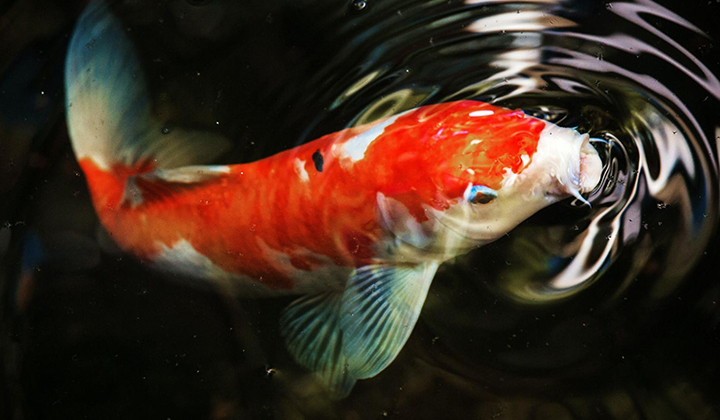
Experienced breeders pair the male and female in the late afternoon since koi courtship takes a few hours. Spawning typically takes place just before dawn. Make sure he isn’t being overly aggressive by staying for a while. Koi mating can be loud, but some males go too far and need to be taken away for the female’s protection.
Breeding koi fish is not that difficult of a task. Follow the steps below to learn how to breed koi.
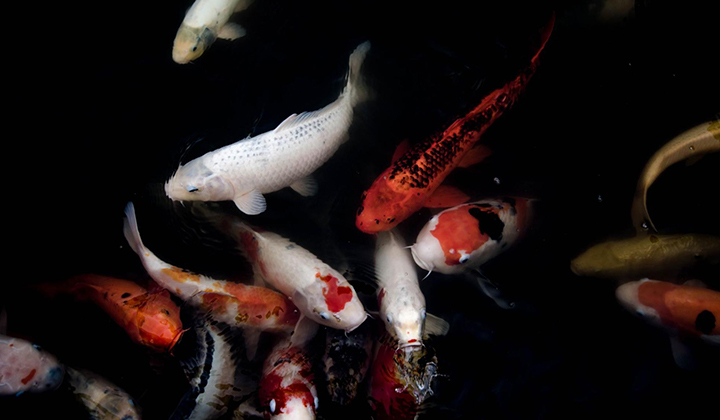
Back at the pond is the male. The female rests and receives medical attention for any physical injuries for a few days in the hospital tank. Both sexes abandon the eggs and the young after spawning. The breeding tank becomes your nursery tank once the adults have been removed.
Koi have a yolk at birth. They can survive on this for roughly 24 hours before needing food. The hatchlings’ mouths are very small, and they have particular dietary needs. They require nourishing food that is tiny enough for them to eat. For the first few days, a liquid or suspended-particle meal is ideal.
Remember to measure the feeding amount regardless of the food that ultimately works best for your infants (this happens through trial and error). Since the filter cannot be turned on just yet, both too much and too little food will starve the koi.
Live foods are available commercially or you can prepare your own. Commercial foods, especially baby koi meal kits, are a beginner’s dream come true. Another choice is tube-shaped liquid meals.
Eggs containing live meals can be purchased and hatched at home. Brine shrimp is a prime illustration. Stock up on plenty of frozen daphnia cubes, koi pellets, powdered fish flakes, and powdered freeze-dried krill (crushed adult food or buy the baby pellets).
In addition, many people utilize a well-known chicken egg preparation for the first several days following birth. This meal is almost entirely composed of protein, which is essential for growing healthy children.
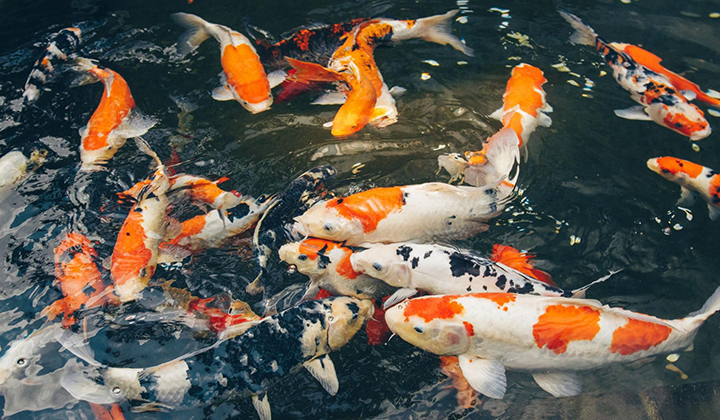
In the wild, koi fish consume anything they can dig up from the pond’s bottom, including algae, plants, insects, worms, seeds, and more. Both the surface and the pond’s bottom are used for hunting. They can continue eating their native food if they have a pond with diverse habitat. Koi can be fed practically anything that humans can eat.
Shrimp, veggies, fruit, and anything downward in carbs fall under this variety. The stomachs of your fish have trouble handling bread and similar items. Additionally, you can give them fish food pellets. Make sure the size is appropriate.
These cyanobacterium, often known as blue-green algae, are aquatic and produce their sustenance. They only reach a length of half a millimeter, making them incredibly tiny. This algae floats freely and is common in lakes with very hard water and an exceptionally high pH.
If you will, the wheat seed is this portion of the plant that germinates and develops into a new plant. Wheat germ can speed up the growth of goldfish and koi, according to experiments. Additionally, it contains natural vitamin E, which promotes healthy blood circulation, enhances oxygen and nutrient flow, supports balanced growth, and helps the body fight disease.
Due to their small size, brine shrimp filter water by devouring whatever they can find in it. Bio-enrichment is the process by which the nutrients they consume are transferred to the fish that consume them. Koi fish that have just hatched are excellent pets and can be fed brine shrimp.
Koi that are young and little favor the smallest form of fish food, flake. Larger koi prefer fish food bars, whereas average-sized koi do well with pellets. Most include sufficient amounts of proteins, few fats, and vital vitamins and elements.
Worms, larvae, tadpoles, prawns, and clams are a few additional favorites.
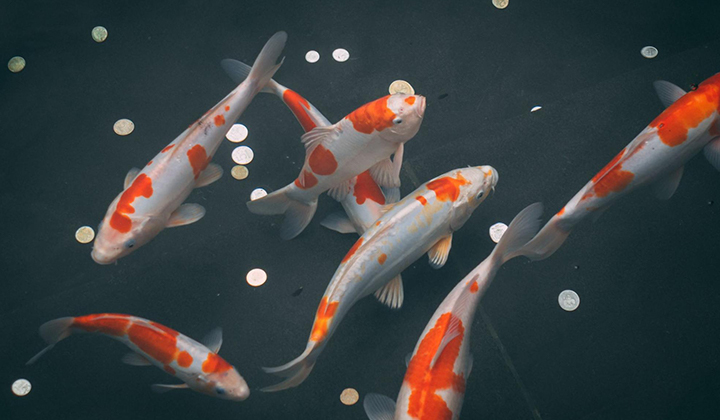
When the tank or the weather warms up, koi multiply. Since ideal conditions might differ from nation to nation, state to state, and even among the fish themselves, it is difficult to define any actual “season.” Most often, as the water warms to about 68 degrees Fahrenheit, outdoor breeding starts.
Early in the mornings in May and June is often when the spawning season occurs. The male koi will begin pursuing and displaying interest in the most responsive and fertile female as they get ready to spawn. The males will begin excitedly chasing the female around the pond’s coastline as she prepares to lay her eggs, prodding her side with their teeth.
Leveling up in the game of koi upkeep and maintaining is one benefit of expanding your pond, but, let’s be honest, nothing surpasses the moment you see the fry hatch. Observing them flourish is the second-best part. The unfavorable aspects of a breeding program may get lost in the excitement.
Study the “side consequences” and choose whether they are worthwhile:
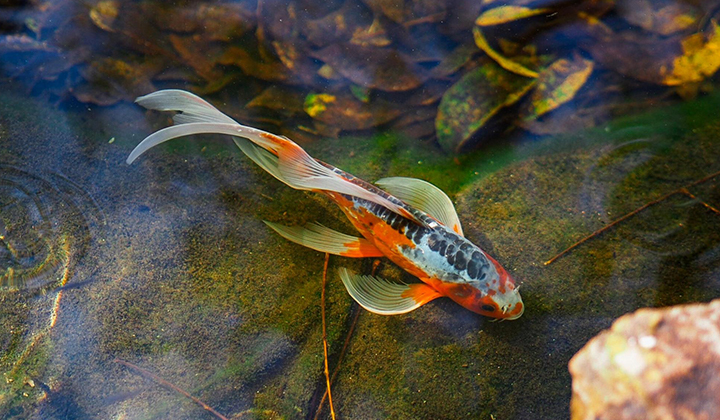
Your pond is probably overpopulated if there are more than 10″ of fish for every 100 gallons of water. An imbalance in the pond’s water can result from too much fish waste. Think about relocating some of them. Your fish will be accepted by a lot of pond contractors and retailers.
The uneaten food is allowed to rot in the pond when you give fish more than they can consume. Make sure to only feed your fish once a day, and only as much as they can consume in 2 to 3 minutes. Pick a high-quality fish meal that floats rather than sinks to the bottom of the pond if left unattended.
You should have between 40 and 60 percent of your pond’s surface area covered or shaded by vegetation throughout the height of the season. Due to the photosynthetic mechanism, whereby plants take in oxygen and emit carbon dioxide, an excessive number of plants might result in oxygen shortages at night. You need oxygen for your fish to survive.
At least once every hour, the full volume of the pond’s water should be circulated. Ensure that the biological filter or skimmer does not contain any debris that restricts the flow of your pump, and take care not to pump water higher than necessary. Each pump has its flow restrictions.
The majority of the trash on your pond’s surface will be removed by your pond skimmer, but you can also use a pond net to catch leaves and small sticks before they fall to the bottom, where they will decompose. Ammonia levels in your pond might rise due to decaying debris, fish excrement, and unused fish food.
Your fish may suffer from ammonia damage, which needs to be taken care of immediately. Your ammonia levels may have risen after adding an algae treatment if your fish are jumping out of the water. If you notice that the levels are excessive, just treat your pond water with Ammonia Neutralizer. An ammonia test kit is available at your neighborhood pet and aquarium store.
Your pond’s filter should be the appropriate size for your water garden, just like your pond pump should be. The majority of pond filters are designed for optimal conditions, and if those conditions are exceeded, your filter loses effectiveness. Always size your filter larger than your pond’s capacity, and remember to clean it per the manufacturer’s directions.
Invest in some of the high-quality filtration products like:
There are several ceramic filter choices on the reliable bio media filter manufacturer IMountainTree website such as Spiral Bacteria House I, Nitro Ring, Lotus Root Bacteria House III, Lotus Root Bacteria House II, Maifan Ring, and Lotus Root Nitro Ring II. You can also select ceramic rings for your koi pond.
You can get a variety of options like carbon, 2D, and 3D filter mats. Invest in a reliable pond filter foam.
IMountainTree also has different types of brushes to keep your filtration system clean. Reliable UV sterilizers are also available.
The health of your fish depends on maintaining enough quantities of dissolved oxygen, which is difficult to maintain when the temperature of your pond hits 75 degrees Fahrenheit. This is why it’s crucial to have aquatic plants shadow your pond’s surface to keep the water cool. To survive, fish require oxygen. Add a diffusor if you notice them gasping for oxygen at the surface of the pond during periods of intense heat.
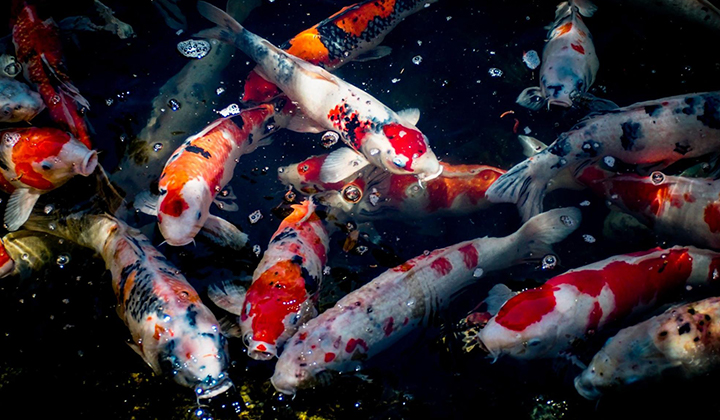
Koi fish keepers are aware of how delicate and crucial it is to manage their living conditions. An aquarist should be aware of all the fundamental needs and requirements of koi fish, as they are for other fish. You can contact Mountain Tree if you are in need of products for your pond.
Leave a Reply